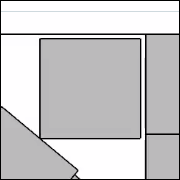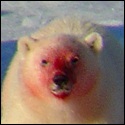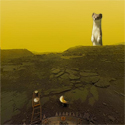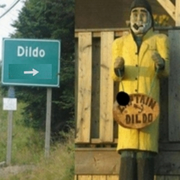|
A Saucy Bratwurst posted:they are in the same class as guns when you try to sneak them in (weapons smuggling) so they treat it the same. All that poo poo is illegal as gently caress in CA too (especially the switch blades I was bringing back) but customs really doesn't seem to give a poo poo unless it's something major. Maybe it's because I'm a US citizen but customs just waves me through after barely looking at my info usually.
|
|
|
|

|
| # ? May 22, 2024 08:29 |
|
Moridin920 posted:All that poo poo is illegal as gently caress in CA too (especially the switch blades I was bringing back) but customs really doesn't seem to give a poo poo unless it's something major. Pretty sly for a white guy.
|
|
|
|
Dely Apple posted:The summit will crumble apart, and in its stead a massive ice block will emerge. Whence emerges: https://www.youtube.com/watch?v=OV3xp5ZXSYA
|
|
|
|
Venusian Weasel posted:I am a geologist, can confirm that the earthquakes are the result of India slamming into Asia. This post is pro as gently caress but I was still having trouble visualizing india slamming into asia, so I found this video: https://www.youtube.com/watch?v=WaUk94AdXPA
|
|
|
|
Tell us more about other continents. But not Australia, that's just 4 billion years of nothing.
|
|
|
|
Moridin920 posted:All that poo poo is illegal as gently caress in CA too (especially the switch blades I was bringing back) but customs really doesn't seem to give a poo poo unless it's something major. Well switchblades aren't a violation of federal law, and all customs gives a poo poo about is federal law.
|
|
|
|
So, what is the final tally so far? 18? That seems pretty lucky considering what happened. That should be it unless some polish guy makes a break for the summit.
|
|
|
|
Outrail posted:Tell us more about other continents. From what I understand from school and research projects, the Rocky Mountain chain and Yellowstone National Park were all products of a thin wrinkle in the North American plate which slammed into the Pacific and Juan de Fuca plates. This wrinkle was a weak point for tectonic forces, so the mountains formed on it instead of the edge of the plate. That explains why the American Rockies are so far inland away from the plate boundary, and the entire mountain chain has hot springs, geysers, etc. It's also why there's threat of a volcano in Yellowstone. They don't just form anywhere, but where the crust is thin. Also, much of the province of British Columbia in Canada is amalgamated volcanic islands squished together by tectonics.
|
|
|
|
Outrail posted:So, what is the final tally so far? 18? That seems pretty lucky considering what happened. Polish guy has already summitted my heart.
|
|
|
|
Hunterhr posted:Polish guy has already summitted my heart. samesies
|
|
|
|
Picnic Princess posted:From what I understand from school and research projects, the Rocky Mountain chain and Yellowstone National Park were all products of a thin wrinkle in the North American plate which slammed into the Pacific and Juan de Fuca plates. This wrinkle was a weak point for tectonic forces, so the mountains formed on it instead of the edge of the plate. That explains why the American Rockies are so far inland away from the plate boundary, and the entire mountain chain has hot springs, geysers, etc. It's also why there's threat of a volcano in Yellowstone. They don't just form anywhere, but where the crust is thin. Also, much of the province of British Columbia in Canada is amalgamated volcanic islands squished together by tectonics. Yellowstone is due to "hot spot" vulcanism, which is the same thing that forms the hawaiian island chain. It's not so much that a thin area of crust created the hot spot, as that the hot spot created a thin area of crust where it is trying to force its way to the surface. Since the tectonic plate moves over the hot spot, you get a chain of islands in hawaii, with the older islands trailing off to the northwest (in the direction of plate movement). Similarly, there is a geographic "trail" for Yellowstone:  Here you can see the affects of the plate moving to the west/southwest; the oldest caldera is 16 million years old, while the newest is two or less. e. here's another view that shows the direction of plate movement: 
Leperflesh fucked around with this message at 01:05 on May 13, 2015 |
|
|
|
Venusian Weasel posted:I am a geologist, can confirm that the earthquakes are the result of India slamming into Asia. I knew I should have waited until a real geologist chimed in. Ace reporting there!
|
|
|
|
Moridin920 posted:All that poo poo is illegal as gently caress in CA too (especially the switch blades I was bringing back) but customs really doesn't seem to give a poo poo unless it's something major. I've never been through customs so idk what it's be like (im white so probably alg) but they check imports with machines for suspicious stuff and open it if they suspect something and then come to your door. I had a box of locknuts from Japan opened and checked for drugs. Guess that would be a pretty good method cause the xray machine can't see through the steel. underage at the vape shop fucked around with this message at 02:17 on May 13, 2015 |
|
|
|
That geo stuff is awesome, thanks for sharing
|
|
|
|
Ruggan posted:That geo stuff is awesome, thanks for sharing um I'd rather hear about specific confiscation policies of customs officials at American airports
|
|
|
|
**stralian
|
|
|
|
Was anyone still on Everest? Or do people just not care to find out at this point?
|
|
|
|
Venusian Weasel posted:I am a geologist, can confirm that the earthquakes are the result of India slamming into Asia. Fking pro tier posting mate
|
|
|
|
Leperflesh posted:Yellowstone stuff Yellowstone is good times. Unless it's peak season. Then it's just a traffic jam. Geology is a chaotic science. You can look at the general principles of how the Earth works, but in the end each geological feature is, by and large, going to be somewhat unique. For example, volcanoes have personalities. Mt. St. Helens erupts every couple decades, while nearby Mt. Hood and Mt. Rainier erupt much less frequently. It's all driving by subtle differences in what's going on in the subsurface that are difficult or even impossible to pick up on. Yellowstone is a lot like that, too. It's got the classic hallmarks of how we think a hotspot should behave. A quick recap for non-geopeeps: Mantle plumes are thought to originate deep in the mantle, at least 600km below the crust, perhaps as deep as the core/mantle boundary. Hot rock works its way up to the surface, acquiring a shape a lot like a rising blob in a lava lamp - kind of a pancake-shaped head and a narrower tail. When the head hits the surface, we get a massive outpouring of lava, called a volcanic trap. Then as the plate moves, we see a series of eruptions that continue indefinitely as material in the plume's tail builds up under the surface until enough is there to cause an eruption. As Leperflesh mentioned, Hawaii is a good example of a hotspot. Each volcanic island represents a vent or set of vents that have dumped lava out onto the surface until they've risen above sea level. The plate carries the vents away, the volcanoes slow down, and eventually activity switches to a new center. The volcanic traps that formed when the Hawaiian hotspot are long gone (you can follow the old seamounts right up to a subduction zone), but we see these in other parts of the world. The Tristian de Cuña hotspot in the central Atlantic has the rifted remnants of flood basalts on both Africa and South America. The La Reunion hotspot trails away from the Deccan Traps. So it is with Yellowstone. Flood basalts in Washington and Oregon, forming the Columbia River Plateau, date to around 16-17 million years ago, and a string of calderas in the map Leperflesh posted trail away from it to Yellowstone. It seems like an open and shut case of a mantle plume and hotspot, right? Well, in reality things are a little murkier than that. For one, the chemistry is really weird. The layers of the Earth are based partially on chemistry, specifically the amount of silica present. When the Earth formed, it formed from little metal silicate beads called chondrules. Given the intense amount of radioactive and impact energy in the early Solar System, the entire Earth was molten. Silica is relatively light, being a molecule of silicon and two atoms of oxygen, while nickel and iron are much denser. With the molten Earth, the two separated out, nickel and iron sinking to the core, silica floating to the top. The mantle is kind of an in-between state, and after the Earth cooled to the point it was no longer molten, plate tectonics has acted as sort of a distillery to remove silica from the mantle. So, we expect a silica-rich layer in the mantle near the oceanic crust, where partial melting has concentrated it a little more, then less and less silica as we go deeper in the mantle. There are a few irregularities stemming from mantle convection, but we don't need to really worry about them. So anyway, chemistry: most hotspot eruptions, land or sea, erupt silica-poor basalt, which contain about 20-30% silica. Basalt is really runny, which is how you get shield volcanoes and cool stuff like ropy pahoehoe flows like in Hawaii. Helping make it even runnier is the fact that hot rock is like molasses, so the hotter it is the easier it flows. Since rock is a poor conductor of heat, and the deep mantle is a lot warmer than the upper mantle, hot spots are really hot. Something like 1200C, whereas basalt erupting from rift valleys are around 800-1000C. These factors mean that hotspot eruptions are really runny and not particularly explosive, even when they occur on land, like at the Anaheim hotspots in British Columbia. But Yellowstone has left a trail of calderas, large volcanic pits that come from magma chambers being exhausted and the overlying rock collapsing into them. That's a sign that the magma contains more silica, is colder, or some combination of the two. At Craters of the Moon, Idaho, which is still tapping into some remnant magma left behind by Yellowstone a couple million years ago, we see that the silica content for fresh basalt is somewhere around 55%, which is barely basalt at all. Recent eruptions of Yellowstone have produced enormous volumes of silica-rich ash, which is also very unhotspotlike. Another thing is lithology, or the kinds of minerals we see in the rock. At Hawaii, we see little bits of rock that contain a mineral called spinel, which isn't stable at the surface or in the upper mantle - it comes from more than 400km below the surface! These rocks can be found with a little bit of searching in most hotspots, and if I parsed something my tectonics professor said once, we've found these little bits of rock from as far down as 800km. But again, at Yellowstone, we don't really see those. Finally, the Yellowstone hotspot has been declining in activity for the last few million years. As we see elsewhere, hotspots can keep erupting for millions of years. Hawaii is at least 100 million years old, La Reunion 65. But Yellowstone is only 17 million years old. Now the common model explains that away as hotspot magma pooling underneath the crust, melting that, and mixing a little bit with the crust before erupting, which both cools it and adds silica. But hotspots should be hot enough that the material should be neutrally buoyant all the way up to the surface. The decline in activity is attributed to moving under thicker crust, which would mean longer pooling times between eruptions. That said, it's a little bit of a mystery as to what's going on. A couple years back, we had a guest lecturer at the department talking about a different way to explain what was going on. This was peer-reviewed in a relatively well-known geology journal, so it's probably not complete bullshit. His idea was that while Pangaea existed, there was a huge swath of oceanic crust in the Pacific Ocean (the Farallon plate, of which the Juan de Fuca and Nazca plates are remnants) that North America began to slide over when the supercontinent broke up. This large swath would have had a relatively powerful convective cell, since it had operated with little change for a hundred million years, plenty of time to become metastable. So as North America drifted westward over the Farallon plate and began pushing more and more of the plate under, the momentum of the convecting mantle began to be directed more and more towards the underside of the subducting oceanic crust. Eventually, the pressure built up to a point where it experienced a blowout just under the subduction zone, which in turn redirected the mantle towards the surface. Kind of a poor man's hotspot. Over time, the pressure would be relieved through the subducting blowout zone, leading to less volcanic activity as the zone got dragged deeper into the mantle. Better, the new technique of mantle tomography sort of supports this interpretation. Think of it like a CT scan of the mantle. Earthquake waves travel more slowly through and are attenuated by hot rock, and travel more quickly and better through cold rock. With a sufficiently dense seismic network, we can trace waves all across the Earth and build up a picture of hot and cold zones in the mantle. Most hotspots have at least a warm signature (although the plume tails, being narrow, don't show up very well), but the Yellowstone hotspot only appears as a slightly warm spot in the upper mantle, originating in a gap in the comparatively cold oceanic crust. This model does a decent job explaining some of those peculiarities in the Yellowstone hotspot I listed, but it's by no means definitive. It's kind of a special snowflake theory with no other definitive examples of that happening, but so it is with a lot of landforms in geology. At the very least you all have a decent understanding of how hotspots work now. Also there's a lot of words to be said about the geology of the western US, "unique" being one, "clusterfuck" being another. It's a brave new world, but I really need some time to organize my thoughts on that one. I guess in the meantime I can post stories of why volcanologists are considered the crazy uncles of geology. Edit: SAL postin in neogibbis 
|
|
|
|
That is some goddamn good stuff VW. I last took geology classes (at SF State, with Dr. Mustart, who I see is still kicking around and apparently still studying what he called "bungholes from hell") in the late 1990s. One of the best experiences I had was a collection of 1-unit summer classes incorporating field trips: one was Geology of the National Parks, and another was Geology of the High Sierras. At that time, hotspot volcanism was the taught explanation for Yellowstone. I guess we didn't get much into the disparities there. We did take a trip out to the Long Valley Caldera, though, so that was our direct interaction with the so-called "megavolcanoes" that became very popular in the sciency entertainment TV show industry a few years ago. I'd be interested in checking out that lecturer's work, if you can give me a reference. I also wanted to say I really appreciate you going back over anything I said, because after 15+ years my geology knowledge is pretty rusty.
|
|
|
|
So does that make it more or less likely that a yellowstone supervolcano is going to wipe out half of north america?
|
|
|
|
God dammit now I only want to know more about geology. This is going to cut into my drinking and playing video games time.
|
|
|
|
Angela Christine posted:So does that make it more or less likely that a yellowstone supervolcano is going to wipe out half of north america? I'll set up the deathpool
|
|
|
|
yellowstone is the katy perry of volcanic hotspots
|
|
|
|
Angela Christine posted:So does that make it more or less likely that a yellowstone supervolcano is going to wipe out half of north america? My reading would be "less," but on a geological timescale, and what we'd be estimating is not whether there will be any more eruptions (I think there almost certainly will be), but rather, how many and how often. The last really big explosive supervolcano eruption there was 640,000 years ago. There have been three in the last 2.1 million years, recurring 600-800ky, so we're "due" in some sense, plus or minus a couple hundred thousand years. Perhaps if volcanism is generally decreasing, the next major eruption will be one of the last ones. With the above information, the odds of a mega-eruption in any given year are left as an exercise for the reader.
|
|
|
|
Thought I'd need to go find my lecture notes from that talk again to remember who it was, but I found it. Talk was by Lijun Liu, assistant professor of geophysics at University of Illinois. Paper was published in Nature (so even better than a geology journal!) in 2012. Paper's called "Origin of Columbia River flood basalt controlled by propagating rupture of the Farallon slab". It's been a couple years since I graduated and I've been having trouble getting a job/into grad school, so I haven't stayed on the cutting edge of new stuff. It was pretty nice being at a school who brought in other scientists to talk about this kind of stuff though. I had a field course back in Owens Valley back in 2011, but a lot of the course concerning Long Valley Caldera had to be canceled thanks to an early winter storm, so we hung out in Death Valley for that part of the course instead. Absolutely lovely in November, wish I lived less than half the country away so I could get there and explore it more. Even as a rural American, it's hard to wrap my head around just how vast and empty it is out there. I can't imagine how it was to those Germans. I've also had field camp in Montana/Idaho/Wyoming and did some field work in central Idaho for the USGS, I can write up a bit of my experiences working there if you all think that would be appropriate for the thread. Edit: Yellowstone is less likely to erupt, but it already wasn't too likely. A few years ago a group did some seismic studies of the area (I.e. brought in some heavy trucks with massive thumper pads that worked in unison, then saw how the seismic waves bounced around) and built up an image of the magma chamber underneath. There isn't a whole lot of magma down there, we don't see much working its way up into the magma chamber, and most of the caldera movement looks like it's magma just doing its thing and shifting around a bit. Absent a series of increasingly strong earthquakes that tells us magma is moving up underneath the caldera, we're probably safe. Meatwave posted:God dammit now I only want to know more about geology. This is going to cut into my drinking and playing video games time. It's geology. It ain't gonna cut into your drinking time. Venusian Weasel fucked around with this message at 06:13 on May 13, 2015 |
|
|
|
Venusian Weasel posted:Thought I'd need to go find my lecture notes from that talk again to remember who it was, but I found it. Aweseome, thanks. this is it right here. quote:It's geology. It ain't gonna cut into your drinking time. Hahahaha, yeah, this. When it comes to geology, booze is ubiquitous. Geologists are hard-drinkin'. VW I dunno if it's appropriate for this thread, but I'd be delighted to hear your stories. My wife and I had occasion to drive home (to the SF bay area) from Aspen Colorado last year. On the way out there to pick her up, I spent a day hiking around Dinosaur, and then on the way back, we spent a day at arches, and then also drove down to Goblin State Park. I picked up some light recreational reading: http://www.amazon.com/Geology-Utahs-Parks-Monuments-Anderson/dp/1882054105 I still need to get deeper into that, but it's a really cool reference, so far.
|
|
|
|
I am super fascinated by the geology of the Himalaya. If I'm understanding my studies right, aren't they really unique in the sense that they're the highest anything has poked up on the surface of the earth in history? Seems like the further back in time you go, the mountains get lower and the oceans get shallower. I'm absolutely floored by the scale of geology: processes take so long, entire ecosystems evolve and go extinct before something even changes; the forces are monumental; and the physical size of entire pieces of planet moving is nearly insane to me. If the earth wants to do ANYTHING major, we are completely powerless to stop it. It really fucks with my mind. Wasabi the J fucked around with this message at 09:25 on May 13, 2015 |
|
|
|
I did not bookmark this thread but after those geology posts I sure did. Geology is fascinating and those summaries posted are really good.
|
|
|
|
Geology doesn't always take place on long timescales, which is something that's always fascinated me. Landslides, lava flows, volcanic eruptions. Most of the time things creep along over millenia at the speed that rocks fold, but sometimes poo poo blows up. My favorite bit of rapid geology is entirely theoretical, proposed as a possible explanation for a few observations in the geological record: Verneshots. Named for Jules Verne, not because he had any input on them, but simply for the mind-boggling, madcap sci-fi scale that would be involved, it's basically an explosive volcanic eruption so large that it blasts a significant portion of the crust into the stratosphere. https://en.wikipedia.org/wiki/Verneshot
|
|
|
|
Wasabi the J posted:I am super fascinated by the geology of the Himalaya. If I'm understanding my studies right, aren't they really unique in the sense that they're the highest anything has poked up on the surface of the earth in history? Seems like the further back in time you go, the mountains get lower and the oceans get shallower. we just need to build a train thing with a big laser at the front and set some nukes off. i saw a film about it.
|
|
|
|
OMGVBFLOL posted:Geology doesn't always take place on long timescales, which is something that's always fascinated me. Landslides, lava flows, volcanic eruptions. Most of the time things creep along over millenia at the speed that rocks fold, but sometimes poo poo blows up. I'm reading T. Rex and the Crater of Doom by Walter Alvarez right now. It's a book about the research that went into proving the impact theory for the extinction of the dinosaurs, and the conflicts between this theory and gradualism. Pro read.
|
|
|
|
Leperflesh posted:Hahahaha, yeah, this. When it comes to geology, booze is ubiquitous. Geologists are hard-drinkin'.  http://space.io9.com/this-geological-field-notebook-is-an-elegant-look-at-mo-1588374224
|
|
|
|
Post your favorite geological event you wish you could have seen. Mine would be the collapse of Mt Manzama to firm the Crater Lake caldera.
|
|
|
|
I Greyhound posted:Post your favorite geological event you wish you could have seen. Mine would be the collapse of Mt Manzama to firm the Crater Lake caldera. your mom getting up this morning
|
|
|
|
I Greyhound posted:Post your favorite geological event you wish you could have seen. Mine would be the collapse of Mt Manzama to firm the Crater Lake caldera. If i was invincible and just an observer, definitely the Toba catastrophe theory, a volcanic event ~70,000 years ago which according to wikipedia "had an estimated volcanic explosivity index of 8 (described as "apocalyptic")". The erupted mass was 100 times greater than the other largest volcanic event in history, the 1815 eruption of Mount Tambora and some people think, though not all, that it caused a 1,000 year volcanic winter. It's also been hypothesised that it caused a genetic bottleneck in human population. The volcanic winter and human bottleneck are just theories, but they're pretty insane anyway. Also what's insane is the fact that the eruption deposited an ash layer approximately 15 centimetres (6 inches) thick over THE WHOLE of South Asia.
|
|
|
|
Wasabi the J posted:I am super fascinated by the geology of the Himalaya. If I'm understanding my studies right, aren't they really unique in the sense that they're the highest anything has poked up on the surface of the earth in history? Seems like the further back in time you go, the mountains get lower and the oceans get shallower. I'm hesitant to say that the Himalaya are completely unique in the Earth's history, there are some suggestions that some segments of the Appalachian pushed into the 8000 meter range at their greatest development, and the western US might have rivaled the Tibetan Plateau before the Basin and Range developed. As for the oceans getting shallower, the deepest parts of the ocean are rarely preserved, and most of the fossils we find these days come from shallow continental seas, or epeiric seas, like Hudson Bay or the Baltic Sea. There's no real reason to think that the time we live in is particularly special geologically, although as a chaotic system any given time period is going to be different from the ones before and after. I guess geology is a study of the sublime in the 19th century sense. A fleeting impression of a rapidly changing environment superimposed on terribly slow momentous forces. As for an event I'd like to witness, I don't know. There's a lot. Probably the stuff that happened recently, just before the dawn of recorded history. It's like a sense that I just missed out on it. A curtain of eruptions over a 10 mile stretch at Craters of the Moon 2000 years ago, or the impact that formed Meteor Crater 50,000 years ago. Or the collapse of northern Moloka'i into the ocean 1.2 million years ago. But some of the landscapes would have been wonderful too. The coal swamps 300 million years ago. The beaches of an ancient ocean under red carbon dioxide skies. Glaciers covering the planet like some primitive Hoth. But it's a wonderful world with too much to see even today, so no real sense pining for something you'll never be able to see.
|
|
|
|
It would've been cool to be there the moment that the land-bridge between gibraltar and morrocco broke open, and the ocean flooded in to fill the mediterranean basin. Which may or may not have happened, perhaps multiple different times, I'm not too clear on the current state of those theories, but articles like these suggest it did, 5.3Mya. Here's another. If I could have seen it without being killed, it'd be cool to see the chicxulub impact. The timing perfectly coincides with the famous K-T boundary, e.g., the end of the Mesozoic Era and the death of the dinosaurs (except for the birds, which you know... birds are dinosaurs). An even bigger impact... which is a gross understatement... would be the theoretical mars-sized impactor that tossed enough material into orbit that the Moon was formed. That's planetary pool on a size that would be incredible to witness. from a really good distance. And from inside a really, really good protective space ship. Somehow. Leperflesh fucked around with this message at 19:37 on May 13, 2015 |
|
|
|
I Greyhound posted:Post your favorite geological event you wish you could have seen. Mine would be the collapse of Mt Manzama to firm the Crater Lake caldera. There are riverbeds in Calgary with an exposed ash layer from that volcano, it's like an inch thick. It's really neat stuff too, it's silky feeling between your fingers because it's so fine, but if you chew it with your teeth it's super gritty because it's basically powdered glass.
|
|
|
|

|
| # ? May 22, 2024 08:29 |
|
Did everyone look at you weird when you started chewing it
|
|
|










































